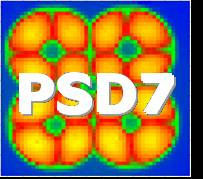Speaker
Prof.
Brian Fulton
(University of York)
Description
When Pauli first postulated the existence of the neutrino, he
suggested that it would have no charge and no mass. This view held
for almost 70 years, but a few years ago results from solar and
atmospheric neutrino studies, now confirmed by terrestrial
accelerator and reactor measurements, revealed the phenomenon of
neutrino oscillations. This is the changing of one type of neutrino
to another as they propagate through space, so that a beam of pure
electron-neutrinos can evolve into a mixture of electron-, muon- and
tau-neutrinos, with the ratios changing with distance. One
consequence of the oscillation phenomenon is that it implies that
neutrinos cannot have zero mass. Unfortunately, while the
oscillation measurements can reveal the differences between the
three neutrino masses (or more correctly the mass-squared
differences) they cannot tell us what the absolute mass scale is.
Given the enormous consequences of a finite neutrino mass there is
great interest in determining this quantity.
Conventional approaches to measuring the neutrino mass involve
measurements of the end point of beta decays. A number of new
measurements are in progress and the view is that these will reach a
sensitivity of around 0.5 eV. However, theorists favour a mass
between 10-50 meV, which will be beyond the reach of this type of
measurement. The only approach known which might achieve this
sensitivity is neutrinoless double beta decay (0). Neutrino
accompanied double beta decay (2) is a rare decay process with a
lifetime > 1020 years. There are 36 known isotopes where this decay
can occur and it has been observed in about a dozen of these. 0
decay, if it occurs, will be even rarer and estimates put the
lifetime in the region of 1026 years. Experiments to record this
process will require large target masses (tonnes) and will need to
be operated in low background underground laboratories.
The COBRA project uses a novel approach in using CZT (Cadmium Zinc
Telluride) detectors both as the target and the detector. CZT is a
room temperature semiconductor, so offering high resolution for the
decay. The neat aspect is that the detector is also the source of
the decay particles, because there are 9 isotopes of Cd, Zn and Te
which are candidates for 0 decay. The signal of the decay is
then two beta particles which are emitted from the same point in the
detector and whose energies sum to the energy release in the decay.
At present the test setup employs an array of 1x1x1 cm cubic
crystals supplied by eV Products. The main problem with CZT
detectors is the poor hole mobility, which leads to excessive hole
trapping and a consequent position dependence on the signal
depending on the interactions depth in the crystal. The detectors
we use employ the “gridded cathode” approach to remove this position
dependency. However, as with any experiment of this type, the key
is to reduce signals from background processes. One of the ways in
which we hope to improve this is by employing pixellated detectors,
by using digital pulse shape readout to record signal risetimes and
by exploiting induced charge sharing between readout electrodes to
determine event positions within the detector volume. These ideas
will be explored in the talk.
Primary author
Prof.
Brian Fulton
(University of York)
